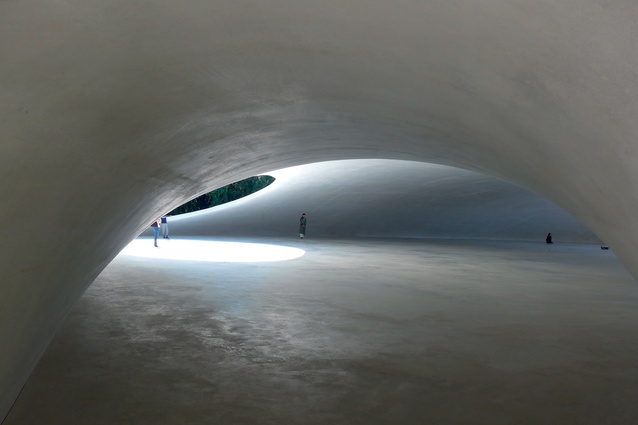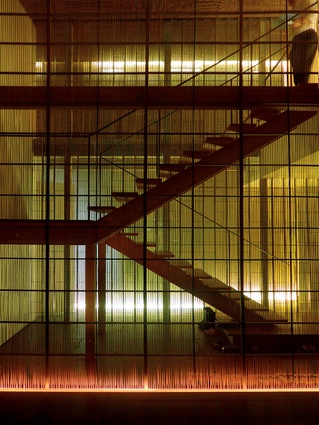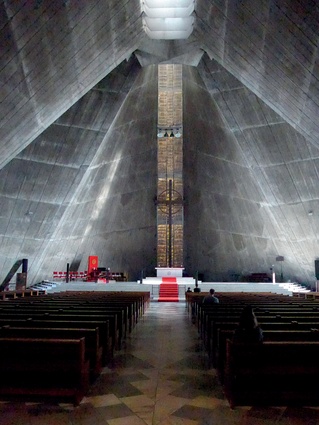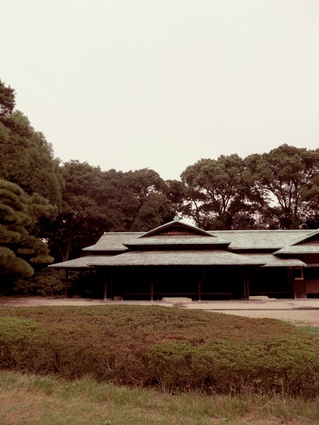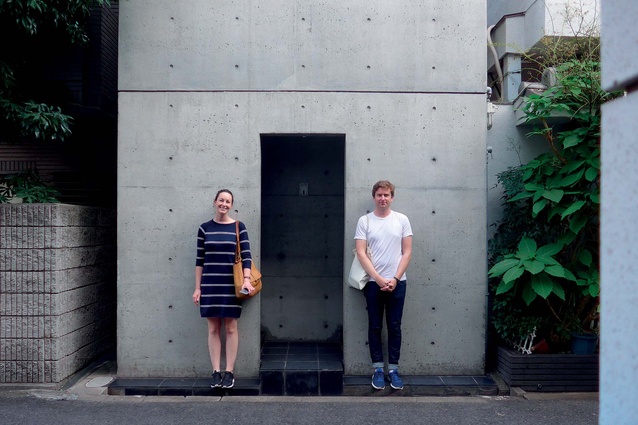The most perfect place
Nicole Stock writes about her trip to Japan, taking in some of its architectural marvels with her husband, architect Henri Sayes, who photographed their tour.
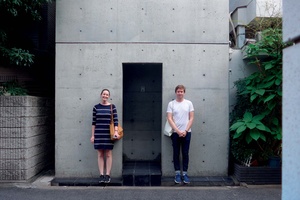
Our three-week trip to Japan last October was never meant to be an archi-tour, though inevitably when an architect and an architectural writer travel, building-spotting somehow always creeps in. Our restrained architectural sightseeing saw us spend an afternoon in Osaka, taking the subway across town to ogle a flat wall of concrete, otherwise known as Tadao Ando’s Row house (which brings up the ethical minefield of trespass and tourism, passion and privacy, visitors and voyeurs - ignored here).
Shopping took on a whisper of professional development as we craned our necks at the high-end boutiques. We travelled to the art islands Naoshima and Teshima, sought out Catholic cathedrals and visited garden teahouses where you could easily read New Zealand bungalows’ whakapapa in their deep verandahs and low, gabled roofs.
In the land of selfie sticks, kawaii V-signs and innumerable photo clicks, it seems surprising that so many of Japan’s most photogenic architectural sites have polite but firm ‘no photo’ signs, forcing you to experience a space rather than try to document it, to enjoy the detail without the distraction of the insect whirr of shutters.
Oftentimes, the request of no photos seems obvious, such as in the dim interior of the Church of St Mary, a soaring Catholic cathedral designed by Kenzo Tange in 1964. The concrete parabolic form feels so deftly twisted, it’s as if God Himself did the pre-cast and is so photogenic you curse inwardly, then surreptitiously take a couple of silent snaps anyway, mutely asking forgiveness immediately afterwards, of course.
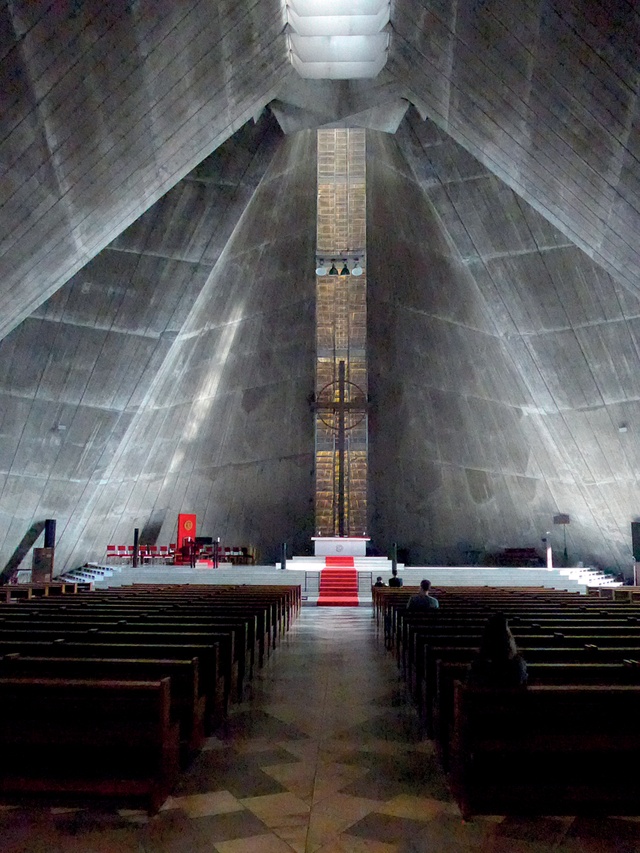
From the outside, the triangular arcing, metal-clad cathedral is interesting enough but step inside and the space makes you gasp. That’s the trick with this extraordinary building − the low, heavy hyperbolic ceiling sweeps up above the altar to a concrete crescendo, cleft along the central aisle. As you walk towards the front, these straight-lined curves soar, seemingly parting in front of you − the entire building opening up, for you. This is a building that feels immediately personal, like you’ve been let in on a wonderful secret, peaceful and profound and, in suburban Tokyo with little preconception, an incredible and memorable surprise.
Others are less obvious but still benefit from tourists actually having to put their phones away and look at the building and art without a screen. The Teshima Art Museum, by Ryue Nishizawa (one half of SANAA), is one of these spots. The structure is long and low like the tensioned surface of a droplet, cut through with two elliptical oculi to give views to the sky and surrounding wood with a softly undulating floor percolating with Rei Naito’s work ‘Matrix’.
There is a strange, almost hypnotic sense of scale here − the oversized jack-in-the-beanstalk arc of a building above, and the pinprick droplets of water that stream together and pool on the floor. There is a grandiosity that is unique, not only due to the generosity of this huge space reserved for a single artwork but also having all the elements coming together entirely to create an experience. This isn’t architecture about taste, though it’s incredibly beautiful; it is architecture of feeling.
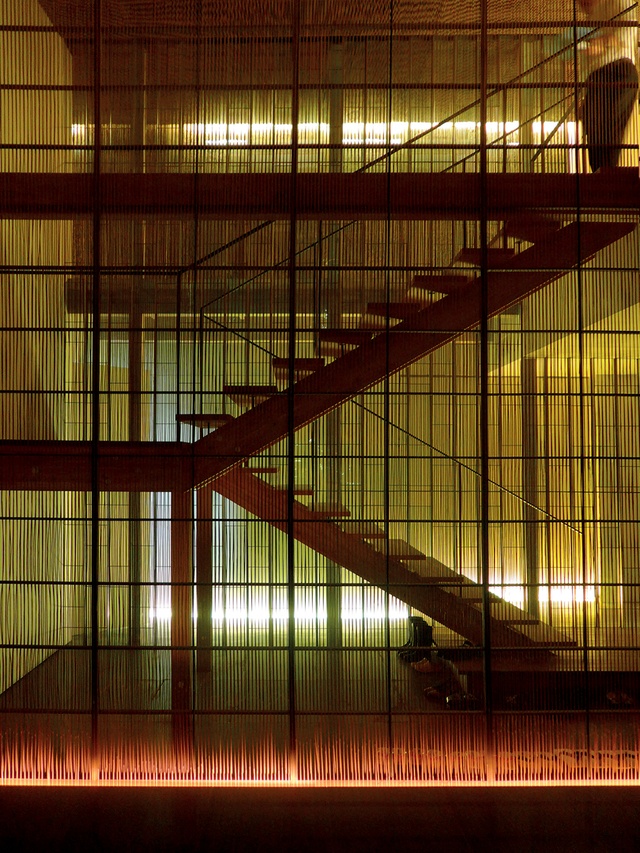
Kengo Kuma’s Ginzan Onsen Fujiya is a small boutique hotel, a modern renovation of a traditional inn in a small, historic onsen town around four hours’ train ride north of Tokyo. You’re paying for the privilege; therefore, unlike so many other places, you can snap away at your heart’s content. But no photo could start to encompass the deft layering of the spaces, the subtle and immaculately detailed materials, the murky, yellow-hued light.
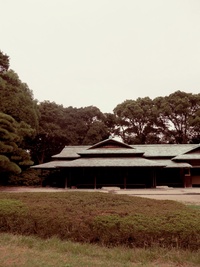
Forgive me a moment as I gush − we don’t gush enough in architectural writing − this has been the most perfect place I’ve even stood in, slept in, bathed in. The architecture is minimal and refined, yet there is richness in the subtle textures and materials. The glass and rice paper and slats and screens and floorboards and bed linens and slate tiles all layer up into a cohesive and considered whole.
Materials draw from the traditional − rice paper and hand-cast glass pock-marked with bubbles − as well as the modern, to create textures and views that surprise and distort, guide and recede. Materials, too, are used to deftly delineate; each private bathing room has been designed with a different material blue slate or bamboo, cast concrete or fragrant cedar − making each a unique experience.
Functionality buttresses the beauty, like the immaculately-designed concealed sliders which roll effortlessly and silently so that nothing jars your senses. The photos are a watery, ill-lit facsimile of a wondrous experience and simply show up the limitations of explaining architecture visually. Like the Teshima Art Museum, or St Mary’s Church, the gasp-inducing joy of these spaces can only be experienced in person.

